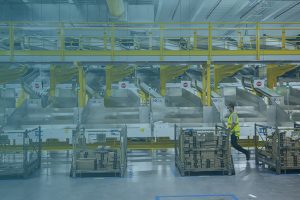Australian Economic Outlook
April 14th 2018 | , Urban Property Australia
Australia’s economy is now in the 27th consecutive year of economic growth without a recession and is expected to grow at a solid pace over the next two years as the drag on growth from falling mining investment nears completion. Growth is expected from non-mining business investment, household consumption, public final demand and exports.
Over 2017, Australian employment increased by 403,000 – a 12-year high.
Over 2017, Australia’s economy grew by 2.3% (see Exhibit 2). Looking forward, infrastructure spending and non-mining business investment should help the Australian economy navigate the challenges of peaking liquefied natural gas (LNG) exports and dwelling construction. The Australian economy is forecast to grow by 2.9% in 2018 and 2.8% in 2019, boosted by the positive momentum in the global economy.
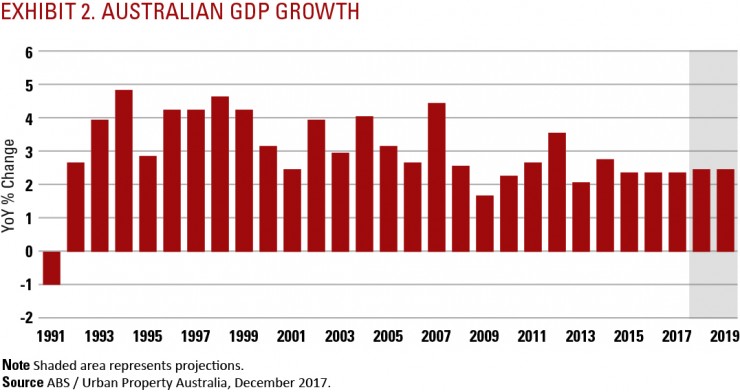
Over 2017, Australia’s employment growth continued to impress, rising by 403,000, of which 302,000 were full-time jobs (see Exhibit 3). Total Australian employment has now increased for 16 consecutive months, the longest uninterrupted stretch since the recovery from recession in the early 1990s. Victoria and New South Wales (NSW) are the standout states; however, all states saw an increase in the month of December (see Exhibit 4). The strength in the economy suggests that the labour market is likely to continue to improve and the unemployment rate will gradually fall. Wage growth in Australia has been persistently low, but the improving labour market should eventually lift wages over time.
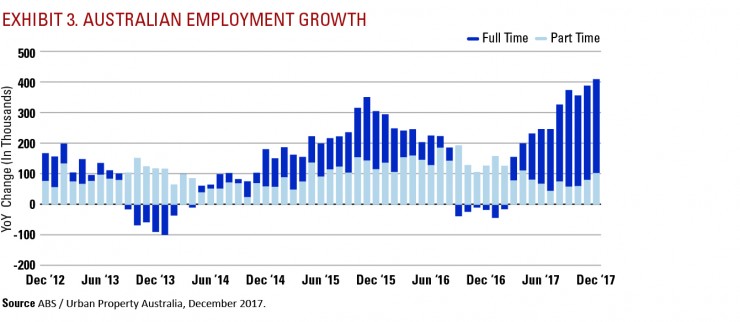
Population growth has picked up slightly over the past three years, due to higher levels of overseas migration, and is currently running at an annual increase of 1.6%. Although the relatively high levels of overseas migration are projected to persist over the medium to long term, the annual rate of population increase is forecast to marginally decline in the short term, averaging 1.5% over the next five years.
NSW is forecast to be the best performing state economy over the next two years, due in part to increasing public infrastructure investment.
While household spending increased 2.7% in 2017, boosted by record-high employment growth, household income has not kept up. Held back by weakness in both wage and non-wage income growth, households had to reduce their savings rate to maintain consumption growth. Looking ahead, household spending is likely to be hampered by somewhat negative wealth effects, with the pace of house price rises slowing.
New business investment slipped in the December 2017 quarter, but this was due to a fallback in mining engineering construction. The latest capital expenditures estimates suggest that non-mining investment will continue to build momentum with new business investment increasing 5% in 2018 and 2019.
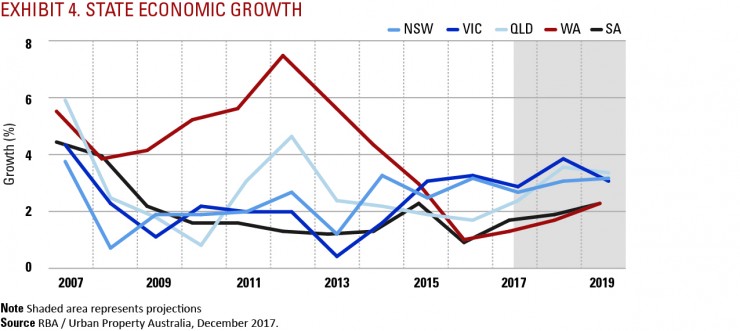
In addition, public infrastructure continues to ramp up. State governments on the East Coast are undertaking transport infrastructure construction (particularly roads and rail), and the federal government is continuing with the rollout of the National Broadband Network (NBN). Overall, new government investment is forecast to rise 8.9% in 2018 and 3.2% in 2019.
Inflationary pressures remain subdued, with the underlying inflation rate remaining below the Reserve Bank of Australia (RBA)’s 2-3% band. Limited wage growth suggests that inflation is forecast to stay close to the bottom of the RBA’s target band.
As expected, the RBA Board left the cash rate at 1.5% at its March 2018 meeting (see Exhibit 5). The Board are continuing to look for evidence of improvement in household income growth, with wage growth still largely tracking inflation. With the expected coming downturn in residential construction (and its impact on business investment) and weak consumer spending, most expect that the RBA will keep the cash rate at 1.5% until late 2019.
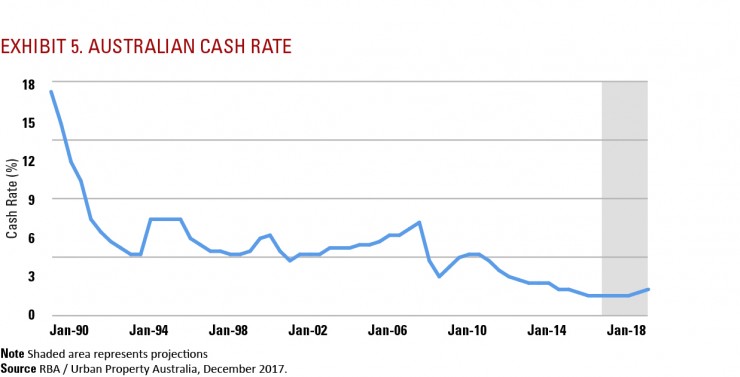
Large movements in commodity prices and regional investment cycles have created significant differences in the recent economic performance of the states. But performances across the states have converged somewhat in recent months.
NSW is forecast to be the best performing state economy over the next two years, due to strength in private non-dwelling construction, public infrastructure investment, and positive momentum in business and financial services and tourism.
The Queensland economy is forecast to pick up over the next two years, benefitting from strong growth in resource-related exports and the tourism and education sectors.
The Victorian economy, which has outpaced the national economy over the past three years, is expected to slow as the housing market cools and consumer spending is held back by weak growth in household income.

